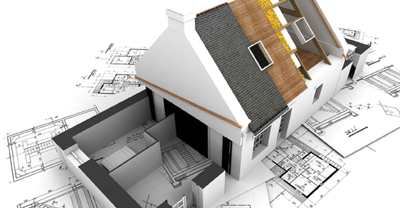
Improvements in Modular Homes Make Them a Competitive Alternative to Site-Built Homes
Christopher G. Cox, Publisher and Managing Editor, www.realesavvy.com
For many decades the preferred homebuilding method has been to assemble all the construction materials on site and build from the ground up, usually over a period of about six or more months. This is still the method used to construct some 90 percent of homes being built today.
A completely different method of offsite homebuilding — modular construction — has also been around for many decades, but has not gained much traction until recently.
“Over the last 20 years,” said Maria Coutts, president of The Coutts Group and a senior officer of the Pennsylvania Builders Association, “the customization of modular homes has a consistent record of matching site-built homes and meeting customer demand, largely due to the use of computer-aided design.
“The use of overhead cranes also allows modular structures to be as wide and as high as desired,” Coutts adds.
In modern modular construction, modules are manufactured in a climate-controlled factory environment. “This decreases the possibility of the materials being exposed to rain, snow and wind,” Coutts explains. “Prolonged exposure to these elements can lead to warping, mold and nail pops throughout the home. Also, squeaky floors and steps can be an issue if it is raining or snowing during a site build,” Coutts said.
Jeff Holdren, district sales manager, western territories, for North Carolina-based Holmes Building Systems, agrees with Coutts that quality control is greatly enhanced with modular building. “Actually, if you think about it,” Holdren said, “a modular home is a lot stronger structure. You have to be able to pick it up, put it on a transport and wind tunnel test it to 60 miles an hour.”
Both Coutts and Holdren point to the relative speed of construction of modular versus site-built homes. “The time a site builder might be involved in the construction process,” said Coutts, “is tremendous and with modular this time is cut in half.” Holdren concurs, noting, “A home can be finished within 120 days from the time we start.
“Many of the homes featured on the television series ‘Extreme Home Makeover’ are modular homes because of the speed required by the production schedule,” Holdren adds.
Coutts and Holdren also agree that the public at large is not aware of the many advantages of modular construction.
“Modular homes are much better than when I started in 2002, 17 years ago,” Holdren said. He attributes the lack of growth in part to the failure of his industry to better educate the public. “We do not do a great job of educating people. There is still a general perception that a modular home is inferior,” he notes.
Coutts is optimistic that this is changing. “Site-built construction has been the standard for so long that consumers don’t always research both sides, pro and con, of these two styles. As the concepts and practices of modular construction are becoming more popular with the general public, more consumers are becoming very receptive to this building practice,” she said.
Perhaps as a sign of things to come, Coutts notes that modular construction has gained much more of a foothold in Europe than it has in the U.S. “Modular construction will eventually increase in use similar to the northern European countries of Denmark, Sweden and Germany,” said Coutts, “where it accounts for 20 to 85 percent of total annual builds.”


Be the first to comment